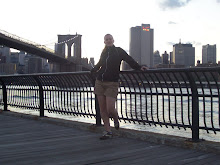
I was able to visit the British Museum of History website to view what was offered and available at the museum. What I found was an amazing website that is available to the public informing them about the museum and its activities. This is a very well organized website that is simple to navigate, informative to a broad audience while giving an insight to the museum and all exhibits offered there.
The mission statement is not clear but the objective of the museum is simple. ‘The museum was based on the principle that the collection should be put to the public use and be freely accessible. It was also grounded in the enlightenment idea that human cultures can, despite their differences, can understand one another though mutual engagement. The Museum was to be a place there his kind of human cross-cultural investigating could happen.’ By providing, an environment where people can come learn about the world and the cultural history, which is enriching and effective in the information provided. However, this website the museum is able to not only convey but also show the public how they are contributing to the mission statement.
There are many different areas on the website where a person can explore to learn more about what the museum has to offer. From the online tours of different, select exhibits. One of those exhibits right now is the Chinese Jade tours, which shows different pictures of some objects on display and gives a detailed description of the object. It is not a virtual tour but if feels like a privet tour that you are on though your computer. Another similar experience is the videos of exhibits where you can watch and hear about certain exhibits. Both of these parts of the websites gives you a taste about the understanding of the many different cultures around the world yet its only a small bit of the exhibit that is shown. Both will add to the experience of the visitor when they are able to go see the exhibit.
Another part of the web site that I was fascinated to see was the learning section where it is wide range of educational parts for a very broad audience. This was ranging from teachers sections for the classes, students learning from elementary school to college, the families’ education all directing to the furthering of knowledge of the worlds cultures. This was also providing the public to see what research is happening at the museum from the journals, research archives, to the projects happening in connection to the museum and the ability for the public to access to the research libraries. This is mainly directed to the scholarly public but it is open to anyone.
Over all the effectiveness of the website and the content was in perfect support to furthering the purpose of the museum. Go on a take a look at the website and see for yourself what the British Museum of History has to offer, you might find something fascinating. I know I did.



